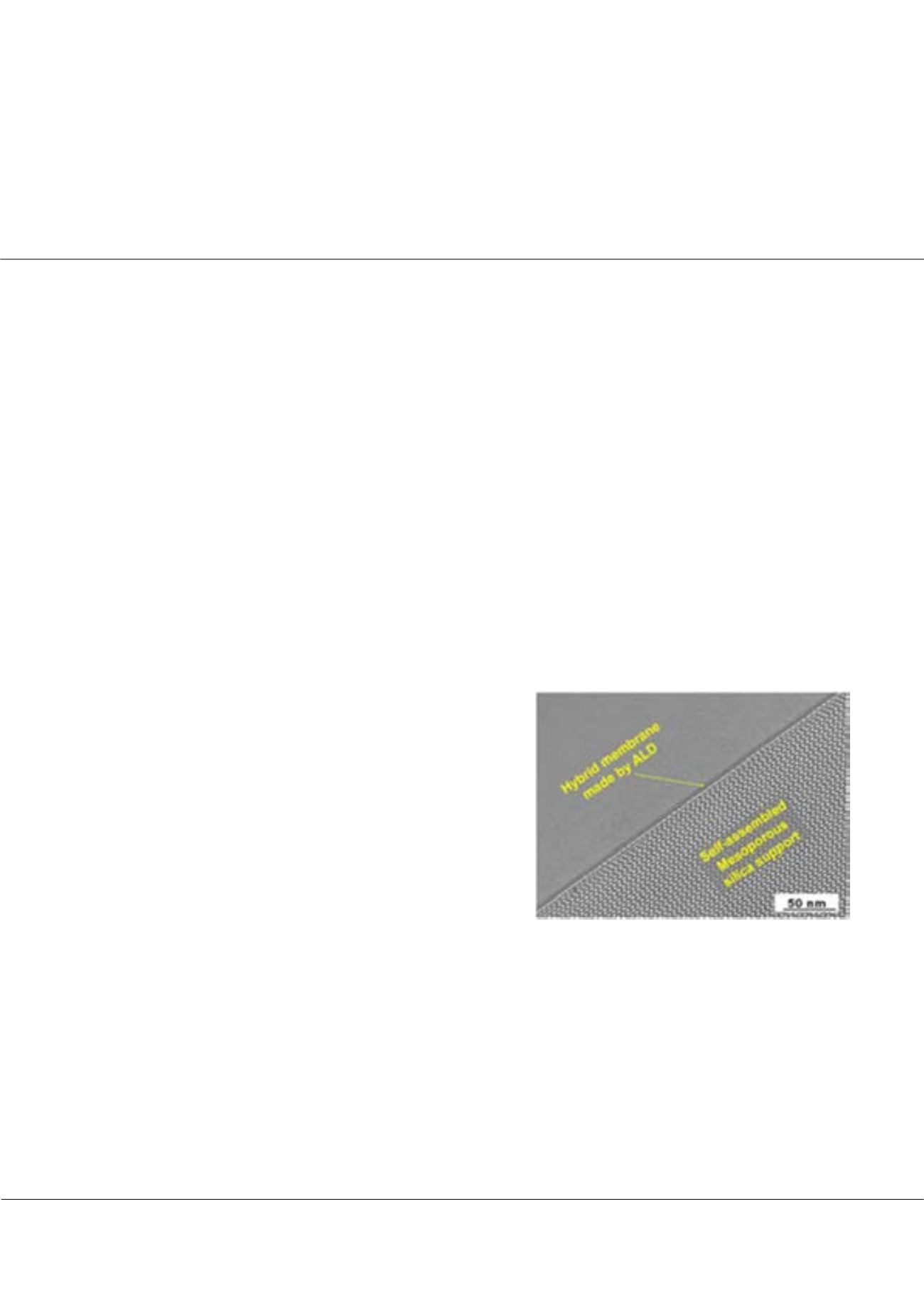

Page 62
conferenceseries
.com
Volume 9
Journal of Bioremediation & Biodegradation
ISSN: 2155-6199
Biofuel Congress 2018 &
Biomass 2018
September 04-06, 2018
JOINT EVENT
September 04-06, 2018 | Zurich, Switzerland
13
th
Global Summit and Expo on
Biomass and Bioenergy
&
12
th
World Congress on
Biofuels and Bioenergy
Ultra-thin membrane made by Atomic layer deposition for CO
2
separation
Ying-Bing Jiang,
University of New Mexico, Albuquerque, USA.
T
he global organic biogas market was worth more than $19.5 billion (€17.2bn) in 2015 and is forecast to exceed $32 billion
by 2023, growing at more than 6% CAGR from 2016 to 2023. Biogas is primarily methane (CH4) and carbon dioxide
(CO
2
). Separation of CO
2
from CH4 is an importance step for biogas upgrading. Conventional approach uses pressure swing
adsorption (PSA) to remove CO
2
from biogas, which is energy intensive. Membrane separation is in general more energy
efficient, but the low CO
2
permeability of current CO
2
membrane results in a consequence that the CO
2
separation process
typically requires compressing gas to a high pressure to achieve high separation flux, which also consumes a large amount
of energy. Therefore a highly permeable and highly selective CO
2
membrane is critical for cost-effective biogas purification.
Reduced membrane thickness and precise pore size/chemistry control are the keys for achieving combined high flux and
selectivity. Membranes in natural biological systems can be down to 4 nm in thickness and the pores are precisely constructed
by molecular assembly, leading to unbeatable performance when compared to synthetic industrial membranes that are
difficult to be fabricated with similar molecular level precision and are typically 100-1000 times thicker. ALD is a layer-by-
layer deposition method that builds up a thin layer with atomic precision in structure and compositions. Here we introduce
the membrane fabrication by the combination of molecule self- assembly and a “plasma-defined” ALD process where the
location of ALDmodification is confined by plasma irradiation. Using this approach, hierarchically structured sub-20nm thick
ultra-thin membranes with precisely defined pore size and pore surface chemistry have been successfully formed, leading to
excellent CO
2
permeability and selectivity.
Recent Publications
1. Y. Fu, Y.‐B. Jiang, et al, and C. Brinker (2018), Bio‐inspired ultra‐
thin enzymatic nano‐stablized liquid membrane for CO
2
capture,
Nature Communication (accepted, in press)
2. Fu, Y; Y.‐B. Jiang, et al and C. Brinker (2014), Atomic Layer
Deposition of L‐Alanine Polypeptide. J. of Am. Chem. Soc., Vol
136 : p15821‐15824
3. Zhu, JL; et al, Jiang, YB et al, (2014), Porous Ice Phases with VI
and Distorted VII Structures Constrained in Nanoporous Silica,
Nano Letters, Vol 14, p6554‐6558
4. Liu, H. et al, Jiang Y.‐B. et al., Synthesis of core/shell structured
Pd3Au@Pt/C with enhanced electrocatalytic activity by
regioselective atomic layer deposition combined with a wet
chemical method” RSC ADVANCES Vol 6 (71) 66712‐66720 201
5. Moghaddam S, et al, Jiang YB et al (2010), An inorganic‐organic protonmembrane for fuel cells with a controlled nanoscale
pore structure” Nature Nanotechnology, Vol. 5, 230‐236
Biography
Ying-Bing Jiang has his expertise in thin film materials and selectively permeable membranes. He developed the method of using plasma-defined atomic layer deposition
(ALD) to make sub-10nm ultra-thin membranes. He is a research Professor at the University of New Mexico as well as the founder of Angstrom Thin Film Technologies
LLC, USA. In recent years his researches focus on tuning nanostructures by ALD and plasma-ALD, and their applications in ultra-thin membranes for gas separation and
selective ion transport. In 2011, one of his ultra- thin desalination membranes received the prestigious “R&D 100 Award” from R&D Magazine. In 2015, his liquideous CO
2
separation membranes received another “R&D 100 Award” that was entitled “Green Technology Special Recognition Gold Award ”. Dr. Jiang has also been served as the
symposium organizer/session chair and delivered invited talks for a number of major international conferences such as MRS meeting, ACS conferences etc.
ybjiang@unm.eduYing-Bing Jiang, J Bioremediat Biodegrad 2018, Volume 9
DOI: 10.4172/2155-6199-C1-014
















